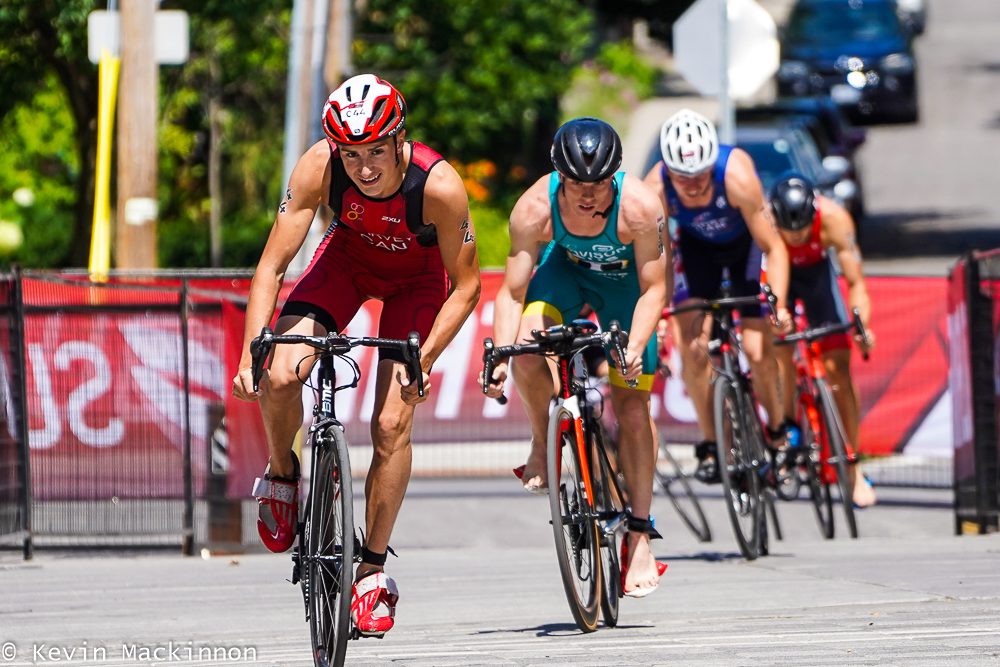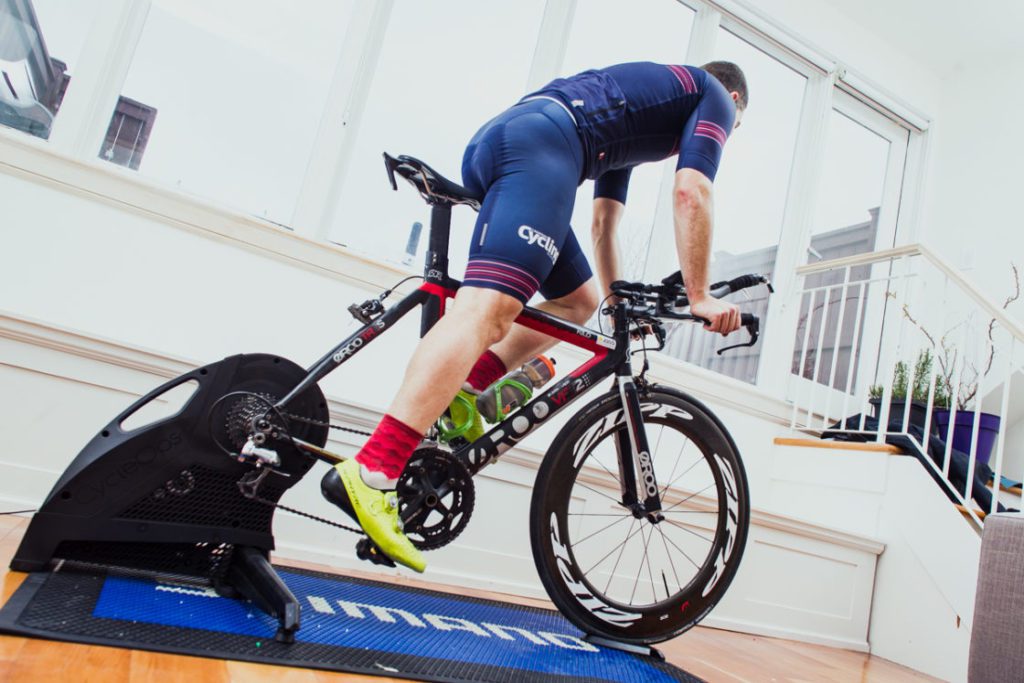Stomp your way to a faster bike split: Anaerobic alactic training on the bike
Improve your power with these short, hard bike intervals
 Photo by:
Kevin Mackinnon
Photo by:
Kevin Mackinnon
When it comes to getting through a triathlon, your body utilizes three different energy systems. The aerobic system (with oxygen) gets you through efforts longer than two to three minutes. It’s the primary energy system we all use for the most of our training and racing. The anaerobic lactic system (without oxygen, with lactic acid) is used for efforts one to two minutes long. During these efforts your muscles produce lactic acid – that burning sensation you feel in your muscles.
While you’re competing in a triathlon you’ll combine those two systems – you’ll use glycogen and fatty acids to fuel the aerobic system for the most part, and glucose and stored muscle glycogen when you start pushing things a bit more once you start to utilize the anaerobic lactic system. (The point at which you move from the aerobic to the anaerobic system is often referred to as your lactic threshold.)
As you try to improve your times, one of the goals of your training is to be able to train your aerobic system to handle harder efforts before you can’t get enough oxygen to your system and start working anaerobically, and building up lactic acid in your muscles.
Related: The benefits of doing anaerobic alactic swim training
Anaerobic alactic system
Even though most triathletes will want to spend much of their time working on the aerobic and anaerobic systems, there is a third energy system that you might also want to spend some time training – the anaerobic alactic (without oxygen, without lactic acid) system. This energy system uses ATP and creatine phosphate (CP) and provides immediate energy for short, quick bursts of up to 10 seconds. Your ATP and CP stores can replenish themselves in a few minutes – once they have, you’re ready for another quick, hard burst again.
Triathletes use this energy system when they’re accelerating or surging – say, at the start of the swim, or jumping on to the back of a pack in a draft-legal race.
Related: Run workouts to train the anaerobic alactic system
Training the anaerobic alactic system on the bike
Cycling coach Chris Carmichael refers to the intervals you’ll do for this type of training as a “stomp.” Carmichael incorporates stomps into his routines to “increase muscular power in the saddle.” The idea is to use a hard gear for these efforts – Carmichael suggests a 53 x 12 for those who are physically able to push that hard a gear. You should modify your own effort accordingly.
A typical Carmichael “stomp” session is done on a flat road. You start at a “moderate” speed, then push down as hard as possible (stomp) on the pedals while seated.
“Concentrate on pulling though the bottom of the pedal stroke and smoothly stomping down during the down stroke,” Carmichael says. “Keep your upper body as still as possible and let your legs drive the pedals. The stomps should last 15 to 20 seconds, with at least 5 minutes recovery between efforts. This is a muscular workout and heart rate may not have time to respond.”
These type of efforts don’t have to be done outdoors, though – you can get a great anaerobic alactic set done indoors, too. The key is to keep the efforts short – eight to 20 seconds – and make sure you get lots of recovery – three to five minutes in between each effort. You should aim to complete eight to 10 of these efforts in a session.
Before you start your “stomp” intervals, make sure you’re really well warmed up – at least 15 minutes of easy riding, then do a few faster, shorter high-cadence efforts (about 10 to 15 seconds) with a decent recovery (45 – 120 seconds) before you start really pushing hard with these intervals.
Benefits of anaerobic alactic bike training
In addition to helping prepare your body for those quick bursts you might need in a race, these type of workouts are a great way to work on your power.

